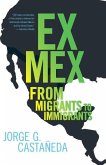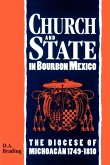A study of illegal immigration into Mexico, Spain's principal New World possession.
The kings of Spain forbade foreigners and other 'undesirables' to immigrate to Spanish America. They saw aliens as threatening imperial, religious and mercantile security, and it might therefore be assumed that the Spaniards were xenophobic and intolerant. Dr Nunn's study shows that statutes tell only part of the story. In the years 1700-60 some 3 per cent of the foreign-born in Mexico were non-Spaniards who had entered the colony illegally. Who were these people, where did they come from, and what were their motives? In answering these questions, Dr Nunn demonstrates how illegal immigrants often escaped official detection and how even those known to the authorities were usually allowed to remain and make new lives for themselves. Neither Protestant nor Jew went to the stake in eighteenth-century Mexico. Harassment was more likely to come from officials seeking funds for an impecunious government than from the Inquisition.
Table of content:
List of tables and figures; Acknowledgements; Introduction; 1. Spies, interlopers, and the famous foreign merchant; 2. Entering the viceroyalty: immigrants by accident and by design; 3. Religion: the essential requirement; 4. Other hurdles to acceptance; 5. The burden of wealth; Conclusion; Appendixes; List of abbreviations and conventions; Notes; Bibliography; Index.
The kings of Spain forbade foreigners and other 'undesirables' to immigrate to Spanish America. They saw aliens as threatening imperial, religious and mercantile security, and it might therefore be assumed that the Spaniards were xenophobic and intolerant. Dr Nunn's study shows that statutes tell only part of the story. In the years 1700-60 some 3 per cent of the foreign-born in Mexico were non-Spaniards who had entered the colony illegally. Who were these people, where did they come from, and what were their motives? In answering these questions, Dr Nunn demonstrates how illegal immigrants often escaped official detection and how even those known to the authorities were usually allowed to remain and make new lives for themselves. Neither Protestant nor Jew went to the stake in eighteenth-century Mexico. Harassment was more likely to come from officials seeking funds for an impecunious government than from the Inquisition.
Table of content:
List of tables and figures; Acknowledgements; Introduction; 1. Spies, interlopers, and the famous foreign merchant; 2. Entering the viceroyalty: immigrants by accident and by design; 3. Religion: the essential requirement; 4. Other hurdles to acceptance; 5. The burden of wealth; Conclusion; Appendixes; List of abbreviations and conventions; Notes; Bibliography; Index.








